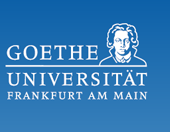Wir sind umgezogen! Bitte besuchen Sie unsere neue Homepage. / We have moved to another server! Please visit our new homepage.
Saving the Jews – Er retung der Yudn – ער רעטונג דער יודן

From the exhibition "Yiddish and Jewish-German Prints: The collection Judaeo Germanica"
von Tekle Ekvtimishvili, Kerstin von der Krone, Marie-Luise Schmidt
The Purimspiel, a comedic dramatization of the biblical book of Esther dedicated to the commemoration of Esther's rescue of the Jews in the Persian Empire, became a popular feature of Ashkenzi festive culture in the 16th century. While there are hints about an early theatrical tradition in Jewish culture, Purim presents itself as an exception. It was closely connected to the tale of Esther and Akhashverosh, a story of the fragile everyday life of Jews in the Exile. While harshly criticized by the Rabbis, it became a socioculturally important festivity in the Jewish religious year. The non-religious character made it possible to introduce far more elements of theatrical traditions from the surrounding communities. While the Purimspiel was for a long time neglected as “low culture" (Shund), it became an influential inspiration for modern Yiddish theater. The present book adapts the Purim story in Yiddish, offering "a sad play with a joyful ending" in five acts. While all plays rely on the Megillat Esther, they show a variety of peculiarities rooted in their geographical and temporal context. With respect to the Er retung der Yudn durkh Ester und Mordkhe from 1779 Khone Shmeruk (Shmeruk, 140-147) assumes an early maskilic impact. It is less burlesque, written as a tragedy with Mordkhe as tragic figure and tends linguistically to German. Mordkhe is often speaking in sephardic Hebrew, an accepted standard language among the Maskilim. The University Library Frankfurt holds a copy with a handwritten note on the title page which identifies its former owner: Beyle bat Zalman.Originally this text was published as part of the online exhibition Jewish Books & Jewish Collections: Treasures of the University Library Frankfurt on the occasion of the 12th Congress of the European Association for Jewish Studies at Goethe University Frankfurt, July 2023.
Literatur
Yaʿakov ben Yehezkel aus Posen, ער רעטונג דער יודן דורך אסתר אונד מרדכי. Er retung der Yudn durkh Ester und Mordkhe, Amsterdam 1779. Yiddish | Nehemia Brüll Collection | Call Number: Jud. Germ. 601 | Digital copy via Frankfurt's Digital Judaica Collections.




